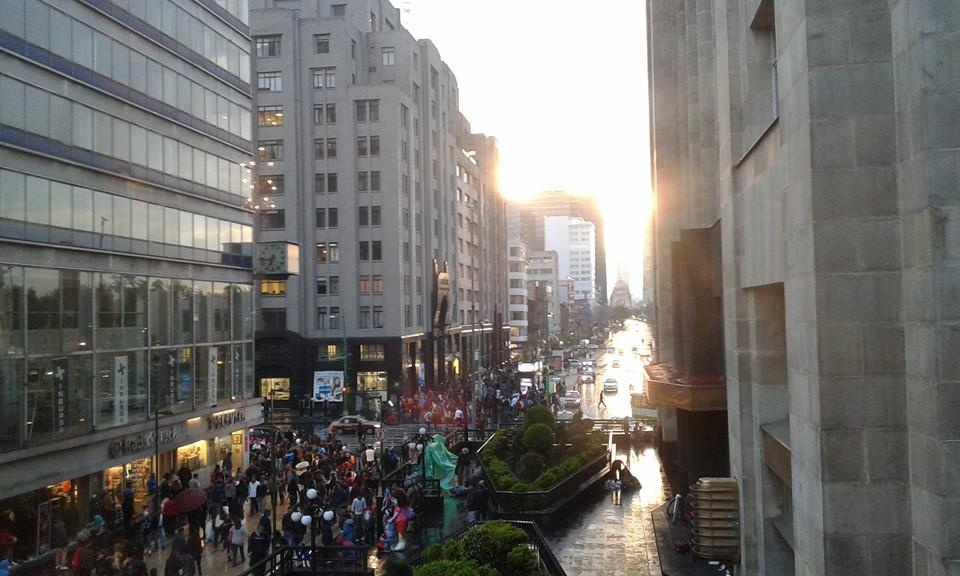Pedestrian Madero
FC-01x Future Cities (1st Run) - Exercise 1 : "Making the Invisible - Visible"

Uploaded on 2015-05-21 by aksc000
1. Description. In mexico City, there's only one pedestrian street (named Madero) that connects the main square from the historic center with several important nodes and architectural icons from the city (Palace of Fine Arts, Reforma Avenue, Latino Torre, among others). The picture shows the end of that pedestrian street, just before crossing the perpendicular vehicle street (Central Avenue) and encountering the “National” building and the Palace of fine Arts . The building appreciated at first plane on the left (blue strips) is the Latino Tower, a well known modern skyscraper that survived the 1985 earthquake without any damages. The building shown in the right is the Guardiola building, an Art Decó construction built in 1985 as a complement for the Bank of Mexico. The ground floor is over the sidewalk level and even though it is considered a public space most of the citizens do not use that area. We can find homeless people there very often. This is where the pedestrian pathway ends. 2. Identify two invisible information. Due to the fact that *Madero* is the only pedestrian street passing through all these nodes, it tends to exist an overcrowding situation every day. From time to time it is impossible to walk in a regular velocity through *Madero*. The first invisible information is related to that. Pedestrians are not priority; they are not considered as the main user when it comes to transportation. We can extract from the picture that there is a vast amount of people trying to get from main square downtown to Reforma Avenue (by walk). A single pedestrian street (which doesn't even continues until Reforma Avenue) is not enough for them. The second invisible information is the exclusion generated from private buildings (as the Guardiola building). Different heights in their design and lack of commerce or services promote the isolation of the sidewalk from Madero. Thieves and homeless are hold in there, causing insecurity among other factors. 3. Select one of your choices. I choose the first option. I think that the information related to the pedestrian street can become knowledge because based in this information we can consider the possibility of planning and designing more and better pedestrian streets to connect important nodes located through long distances. For me, giving priority to pedestrians and bicycles instead of vehicles is one of the major challenges for the government, in order to reduce contamination, traffic, accidents, among others. [1]: https://edxuploads.s3.amazonaws.com/14321782912260514.jpg